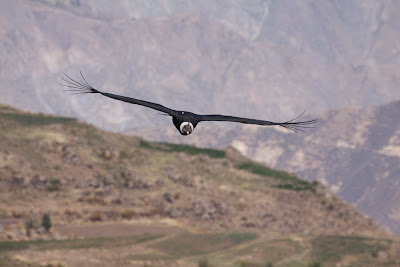Inca Trail Day 3
Distance 19km
Altitude 3600m - 3950m - 3540m - 3670m - 2700m
Up at 0500 again this morning ready for our longest day and hoping that the weather would be better. Thankfully we were in luck. The weather had cleared and the view was absolutely spectacular!
Today we covered two mountain passes, the first was 3950m after which we had to descend to 3540m before ascending again to 3670m. Thankfully we stopped for lunch between the passes... although this was only 1045. The panoramic was absolutely stunning from the top of each pass and from the top of the third pass we caught our first glimpse of Machu Picchu Mountain, the mountain that overlooks the sacred site of Machu Picchu. Our guide, Julio, also made today more special as at one point when we were all feeling quite tired after just starting our descent over the second pass we heard this magical traditional bamboo flute music coming from the mountains. Little did we know that Julio had walked ahead of us and had stopped at a beautiful point on the mountain and started playing his flute. It was so calming and tranquil, once we reached him we all stopped for a rest and continued to listen to him play his Incan melodies. Throughout the rest of the day we would intermittently hear the flute calling us and sometimes he would be with us and play, which astounded us because we were all usually puffing our way up a hill.
After lunch we had the option of taking the regular well trodden trail to our 3rd and final camp or to take an alternative route that was also a trail but one that had not been regularly used since the early 90’s. Of course we chose the alternative route with the promise of being able to Machu Picchu at the end of it, as well as seeing an Incan ruin that was completely overgrown the way they all were once found... including Machu Picchu.
The trail was great fun. We really felt like we were jungle bashing off the beaten path as it was only just wide enough for us to pass in parts and was in need of clearing. This trail took us along a ridge of a mountain and at the end there was a clearing for communication towers which allowed us a perfect spot to enjoy our first view of Machu Picchu - it was very cool! About half way along the ridge we climbed down into the promised untouched ruins, wow! It was like walking into another world, we really felt like explorers. The ruins were covered in moss and had trees growing out of parts. It was awesome. After resting overlooking Machu Picchu we made our descent. The tracks we followed seemed more like it was goat and water run off tracks than walking tracks but we all made it, although a few of our group slid on their bottoms for a good deal of it :-). We arrived at the top of another set of Incan Terraces which the main track goes through as well but by this time it was after 6pm so we didn’t really explore too much, instead we just continued on trying to get back to camp before complete darkness engulfed us.
We arrived to camp around 1830 to the applause of our porters, dropped our bags in our tents and enjoyed a beer!
Exhausted we were all in bed by 8pm again keen to rest for our final walk into Machu Picchu tomorrow.




























